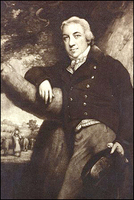Edward Jenner and the Smallpox Vaccine, Part 1
For thousands of years, smallpox was a dreaded killer. The mummies of ancient Egypt show that the disease existed 3,000 years ago. By the 18th century, it killed nearly a half million people each year in Europe. The disease spread from one sick person to another. It is now known that smallpox is caused by a virus.
Twelve days after being exposed to the germ, the symptoms would appear. Headache, fever, and vomiting were the first signs of illness. Pink spots on the skin would turn into red blisters filled with pus. If a person was very lucky, the blisters would dry up. The scabs would fall off, and the lucky survivors were left with scars called pockmarks for the rest of their lives. Many of them went blind. If a person was not lucky, he died a slow and agonizing death from the disease people often called the "speckled monster."
As long as 1,000 years ago, doctors in China knew that the lucky people who did not die from smallpox were immune to the disease. They could not have smallpox twice. Chinese doctors began to inoculate people for smallpox. A doctor would take pus from a sick person's skin and scratch it into the skin of people who were not sick. Those who were inoculated would get the disease. If they were lucky, they would only be mildly sick. They would survive, but more importantly, they would be immune for the rest of their lives. They could never get smallpox again. Some inoculated patients would get seriously ill with smallpox. They would either be badly scarred and pockmarked, or they would die.



